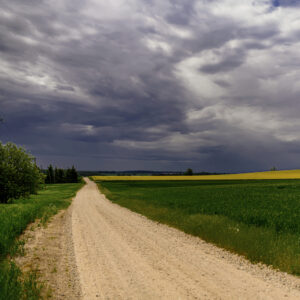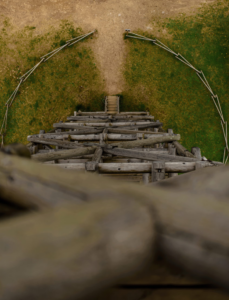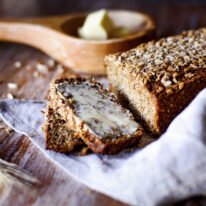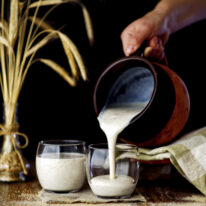
Estonians live in a land that has four seasons and a number of short transitional seasons, with winters of long dark nights and summers of long bright days. Estonia is surrounded by the sea on the north and west. The landscapes are diverse, the country is sparsely populated, and forested. You might encounter a moose or roe deer on the road, and sometimes even a bear. Large white storks walk along the roadside, and millions of migratory birds fly over Estonia in the spring and autumn.
The sea, islands, forests, fields, bogs, and swamps, small towns, villages with farms separated from each other, old gardens with ancient trees, manor parks and buildings, churches with whitewashed walls and red spires, narrow winding roads between forests and fields – these are typical Estonian landscapes.
A large part of Estonia is low and flat, and Estonians call any slightly elevated place a mountain. Strictly speaking, there are no mountains in Estonia geographically, only hills, eskers, kames, drumlins, cliff islands, and banks. Emotionally, comparing and observing landscapes, one can indeed find mountains in Estonia, and Estonians can officially consider themselves the inhabitants of the most mountainous Baltic country. The highest mountain in Estonia, Suur Munamägi, is 318 meters high. Harimägi (212 meters), with an observation tower, is located 8 kilometers from Sangaste.
- Sangaste is surrounded by grain fields;
- Harimäe observation tower;
- Hiking trails.


Food and drink:
Estonian food and drink are not considered classics of world cuisine. Some of them may evoke aversion in foreigners. To understand Estonian cuisine and the eating habits of Estonians, one needs to be familiar with Estonia’s climate and history. Estonia is a northern country where olives and grapes do not grow. Oysters cannot be caught in the coastal waters of Estonia. For centuries, Estonians have been farmers who have eaten not what tastes good, but what is available. The food and drink consumed in Estonian farms until the mid-19th century differ from what we now recognize as “authentic Estonian food.” The most important foods were made from grains: rye bread, baked from sourdough, barley porridge or soup, barley flatbreads, and kama (a traditional Estonian food made from a mixture of roasted barley, oat, rye, and pea flour). They drank taari (a traditional low-alcohol drink), kvass, sour milk, birch sap in spring, and beer and vodka on special occasions.



The Sangaste Rye House rye restaurant offers dishes made from “Sangaste” rye, as well as local and South Estonian ingredients. Its mission is to show guests how versatile Estonia’s national grain, rye, can be. The menu features both traditional and completely new rye flavors – rye flatbread, kama drink with kefir, onion pie, meat in a rye coating, a handmade burger with a rye bun, and many other delicious items.
Go see:
- Sangaste manor
- Sangaste stable
